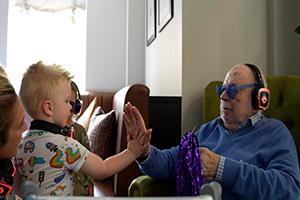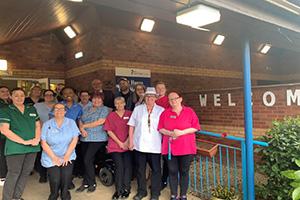Assistive tech and the legal implications
Article from Jennifer Johnston, associate at insurance risk and commercial law firm BLM
The background and the benefits
Increasingly, assistive technology is being adopted to support those living with various debilitating conditions to improve their quality of life.
An impressive variety of aids can be used to help with those living with dementia, ranging from everyday technologies that you can find in your smartphone, to specific medical aids.
For example, those living with dementia can utilise aspects of popular technology to improve their daily lives. Phone calendars can be set with daily reminders to take medication or attend appointments, and location finder apps are a clever way to track a person’s whereabouts.
There’s also a selection of new technologies created specifically for those with conditions such as dementia. These are being adopted by care providers, both in care homes and for domiciliary care. Technologies include movement sensors that play a message to remind people to perform an activity such as turn the oven off, water isolation devices that turn taps off if they’re left running, and fall mats which are placed near the bed to alert staff if a service user is out of bed.
The possible drawbacks
Although these aids can be very helpful, they also present a whole new set of challenges for care providers.
Firstly, a large number of these technologies rely on the user being able to understand and interact with them comfortably. However, more often than not, the elderly or cognitively impaired can struggle with technology, making it more of a hindrance than a help.
Secondly, it’s important to properly risk assess the use of such aids. It’s possible that as more assistive technology is adopted, care providers and their insurers may see an increase in claims where people have been incorrectly assessed as being capable of using or interacting with an assistive aid. Caution should be used to ensure over reliance is not being placed on technology.
And thirdly the benefits of assistive technology rely on the aids being correctly used by the care staff and the service user. For example we have dealt with a nursing home claim where a fall sensor was being used in a resident’s bedroom to alert night staff if they got out of bed. One of the care staff unfortunately switched off the fall sensor in error, which meant that following the resident’s night time fall, care staff weren’t alerted.
No matter how far technological development takes us there will always be some human involvement. Whether it’s the third party that installs the technology, the care staff who recommend its use and monitor it, or the manufacturers who create it, one of these parties could be held liable by the claimant if something goes wrong. It’s the responsibility of each of these parties to be thorough in the way the assistive tech is created, fitted and used, to ensure it will always benefit the user and the likelihood of any problems is reduced.
Preventative measures
There are some steps that care providers can implement to ensure they’ve done everything in their power to prevent any issues occurring, and that if the worst-case scenario does happen, they’re not liable.
The most important step is a thorough assessment. Whether using assistive technology or not, it’s essential that care providers undertake plans and risk assessments to understand the needs of those in their care. The person performing the assessment must be able to confidently say that the technology is usable and will improve quality of life in some way.
With conditions such as dementia, where a person’s condition can change frequently, it’s essential that care providers constantly reassess the needs of those in their care. It’s not enough to simply review a care plan annually or bi-annually, for example. Instead, constant evaluation needs to be implemented to ensure that the best care is being given and that the most appropriate technology is being used.
And it’s not just about assessing the resident to ensure optimal care, but also looking at the technologies available. There is a constant stream of innovative care aids being created and developed, and it’s the responsibility of care professionals to explore these options and keep pace with technological development to ensure they’re providing the best care possible.
Ultimately, assistive technology can be hugely beneficial as an aid, but it’s essential it remains an aid, and that care professionals don’t become dependent on it or lose sight of the human touch.
We must remember that human error will always be a factor. To avoid legal ramifications and ensure the best care is being provided, constant and thorough assessment of both the service user and the available technology is paramount.





